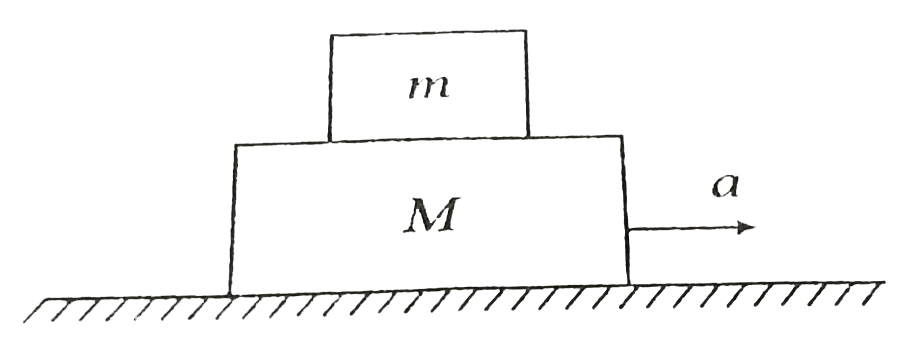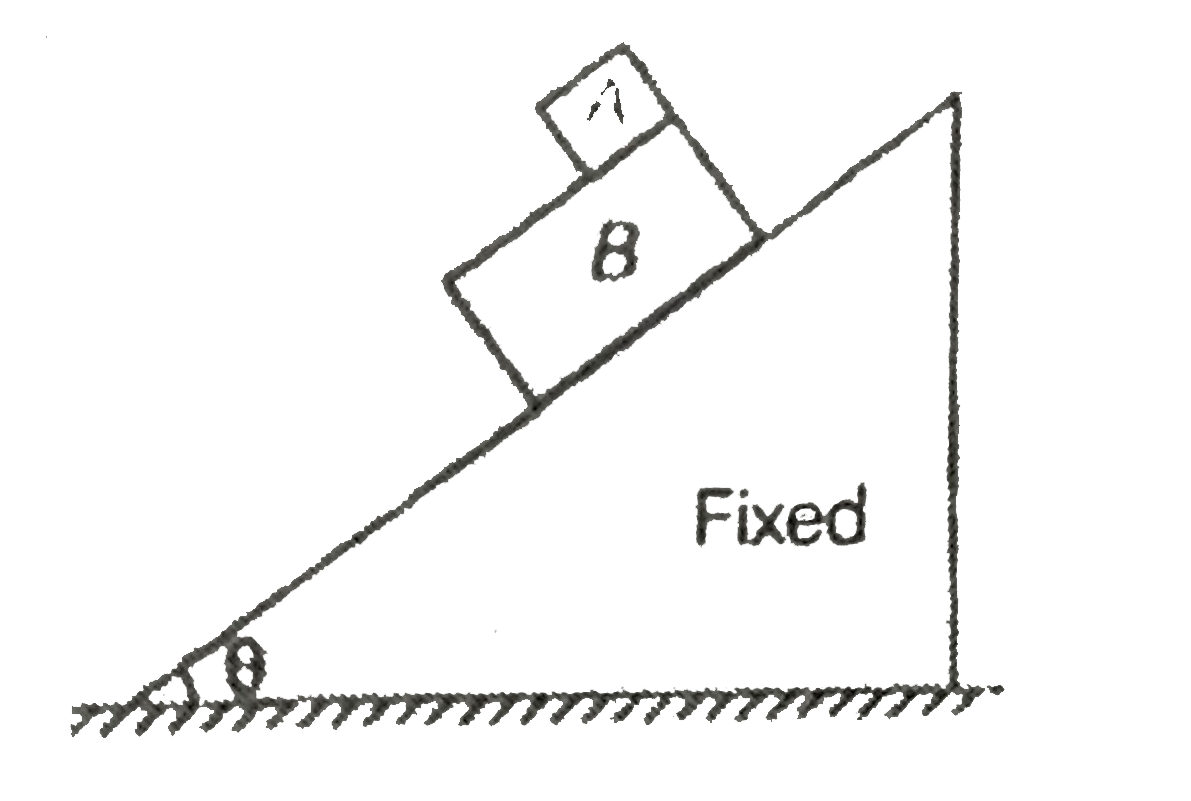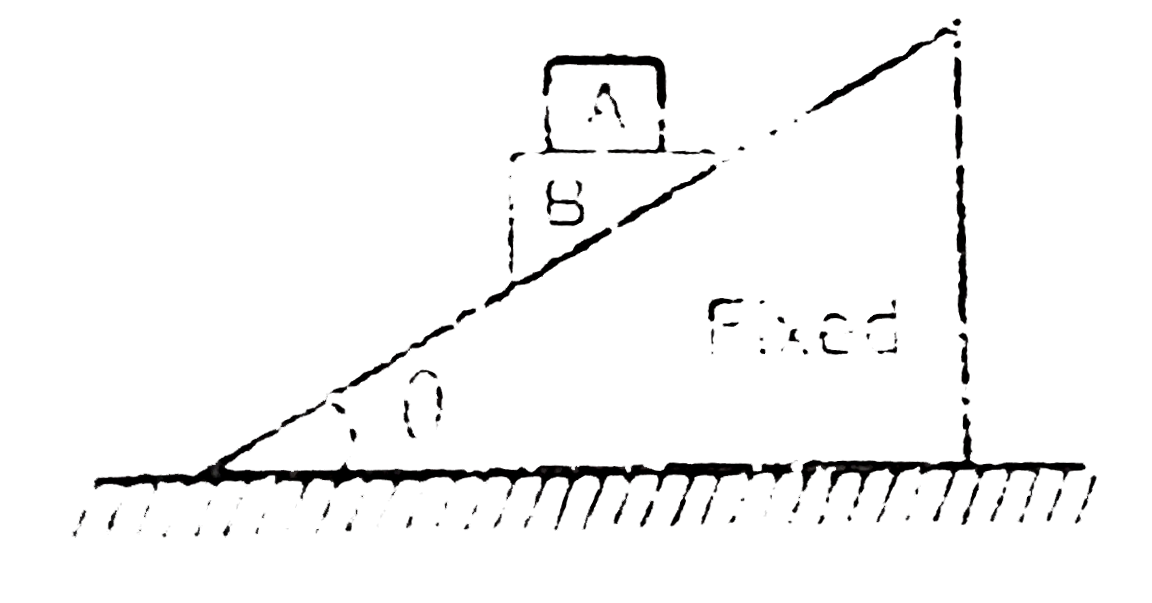Two blocks A and B of mass m and 2m are intially at rest. Length of block B is L and the block A is placed at the right end corner of block B and the friction coefficient between them is μ=1/2. At t=0 a constant force F =5mg2 begins to act on block B towards right. just when the block A leaves B, wind begins to below along y-direction which exerts a constant force mg2 on A. assume that size block A is small compared to B and neglect any rotational effects and toppling of block B. (given h=1/2m, L=1 m and g=10m/s2)

The magnitude of relative acceleration of A with respect to B ( in m/s2) just after the block A leaves B is (assume wind does not effects motion of B)
√10g
√29g4
g√54
3√54g
For block B:
2maB=F−mg2
For block A,
maA=mg
aA=g/2
aAB=−g/2
L=12g2.t21
t1=√25s
time of flight t2=√2hg=1√10s
Velocity when A leaves B:
VA=g/2t1=g/2×√4Lg=√10m/s
Sx=VAt2=1m
Sy=12g22hg=14m
SxSy=4
→aA=g2ˆj−gˆk
→aB=5g4ˆi,|→aAB|=(√14+1+2516)g
Topper's Solved these Questions
Similar Questions
Two blocks of masses 2m and m are in equilibrium a shown in the figure. Now the string between the blocks is suddenly broken. The accelarations of the blocks A and B respectively, at that instant are

View SolutionA block of mass m is placed on the top of another block of mass M as shown in the figure. The coefficient of friction between them is μ.

The maximum acceleration with which the block M may move so that m also moves along with it is
View SolutionA block of mass m is kept on a horizontal table. If the static friction coefficient is μ., find the frictional force acting on the block.
View SolutionTwo blocks A and B each of mass m are placed on a smooth horizontal surface. Two horizontal force F and 2F are applied on blocks A and B, respectively, as shown in fig. Block A does not slide on block B. Then then the normal reaction acting between the two blocks is (assume no friction between the blocks)

View SolutionTwo blocks A and B each of mass m are placed on a smooth horizontal surface. Two horizontal force F and 2F are applied on blocks A and B, respectively, as shown in fig. Block A does not slide on block B. Then then the normal reaction acting between the two blocks is (assume no friction between the blocks)

View SolutionTwo blocks A and B each of mass m are placed on a smooth horizontal surface. Two horizontal force F and 2F are applied on blocks A and B, respectively, as shown in fig. Block A does not slide on block B. Then then the normal reaction acting between the two blocks is (assume no friction between the blocks)

View SolutionTwo blocks A and B each of mass m are placed on a smooth horizontal surface. Two horizontal force F and 2F are applied on blocks A and B, respectively, as shown in fig. Block A does not slide on block B. Then then the normal reaction acting between the two blocks is (assume no friction between the blocks)

View SolutionA block A slides over an another block B which is placed over a smooth inclined plane as shown in figure . The coefficient of friction between the two blocks A and B is μ . Mass of block B is two times the mass of block A . The acceleration of the centre of mass of two blocks is

View SolutionBlock 'A' is placed ober the block 'B' as shown in the figure. Wedge is fixed and there is no friction. Between block 'B' and fixed inclined. Force of friction on the block 'A' is

View SolutionA block of mass m is pressed against a vetical wall with a horizontal force F=mg, Anogher force F=mg/2 is acting vertically upon the block. If the coefficient of friction between the block and wall is 1/2. the force of friction between them is

View Solution